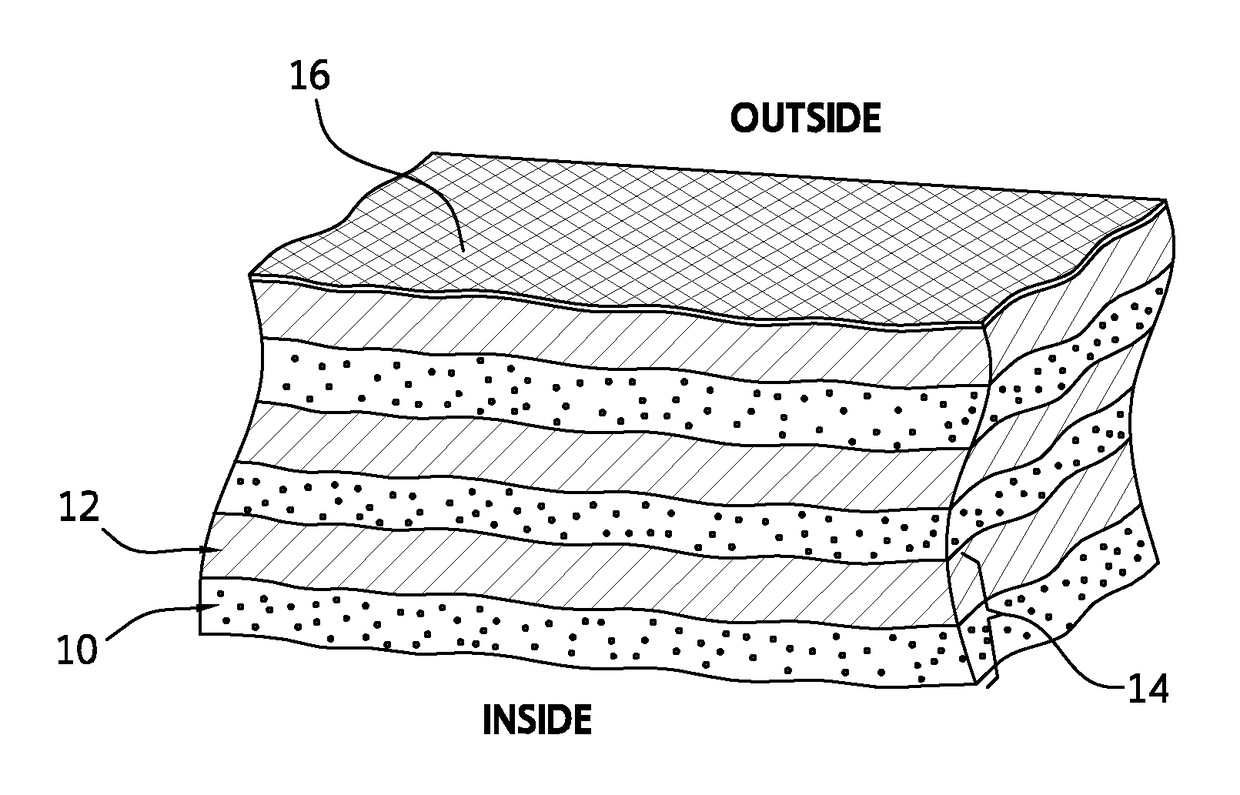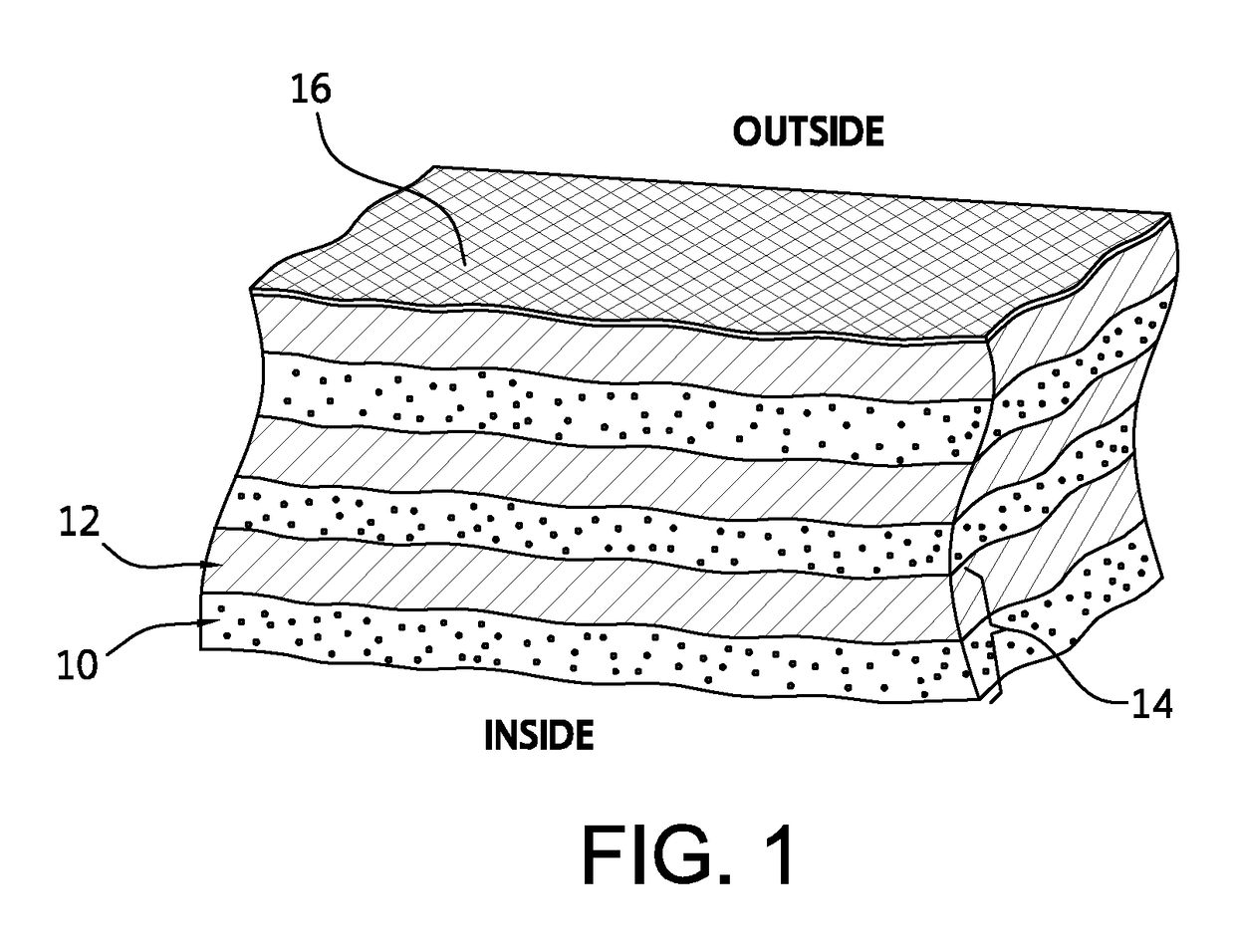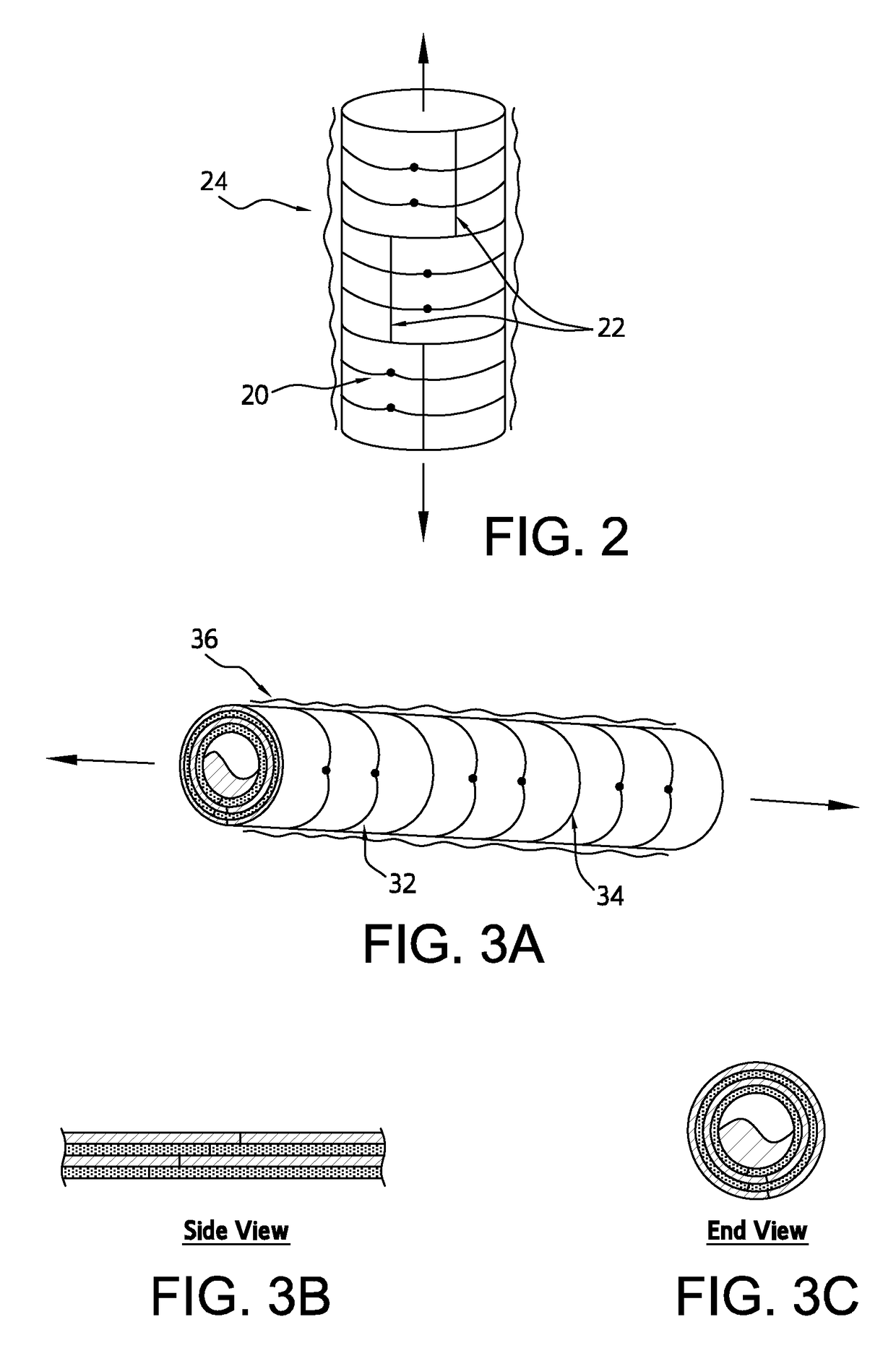Thermal insulation system for non-vacuum applications including a multilayer composite
a multi-layer composite and thermal insulation technology, applied in mechanical equipment, transportation and packaging, synthetic resin layered products, etc., can solve the problems of long life expectancy of thermal insulation systems and notoriously difficult management of conventional insulation systems around pipe supports, and achieves convenient use, simple installation, and cost-effective
- Summary
- Abstract
- Description
- Claims
- Application Information
AI Technical Summary
Benefits of technology
Problems solved by technology
Method used
Image
Examples
Embodiment Construction
[0051]The present thermal insulation system is an externally applied system for non-vacuum applications which comprises a) a multilayered composite having an inner surface and an outer surface and b) an optional outer casing surrounding the outer surface of the multilayered composite. As provided in FIG. 1, the multilayered composite includes i) at least one thermal insulation layer 10 and at least one compressible barrier layer 12 provided as alternating, successive layers and ii) at least one reflective film provided on at least one surface of said compressible barrier layer and / or thermal insulation layer. Both thermal insulation layer(s) and compressible barrier layer(s) are conformable to a three-dimensional surface of an article to be insulated. The thermal insulation layer 10 is always disposed directly adjacent to the surface of the article to be insulated. The reflective film is formed of a material selected from a group consisting of metal foils and metalized foils. In one...
PUM
| Property | Measurement | Unit |
|---|---|---|
| compressive | aaaaa | aaaaa |
| pressures | aaaaa | aaaaa |
| pressures | aaaaa | aaaaa |
Abstract
Description
Claims
Application Information
 Login to View More
Login to View More - R&D
- Intellectual Property
- Life Sciences
- Materials
- Tech Scout
- Unparalleled Data Quality
- Higher Quality Content
- 60% Fewer Hallucinations
Browse by: Latest US Patents, China's latest patents, Technical Efficacy Thesaurus, Application Domain, Technology Topic, Popular Technical Reports.
© 2025 PatSnap. All rights reserved.Legal|Privacy policy|Modern Slavery Act Transparency Statement|Sitemap|About US| Contact US: help@patsnap.com



